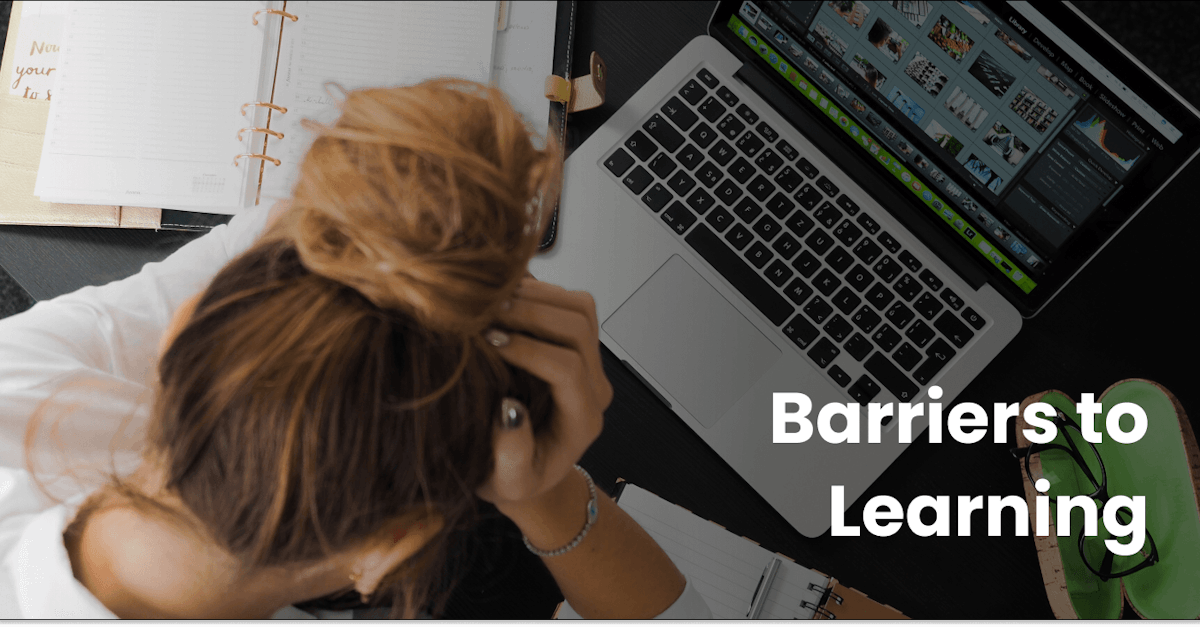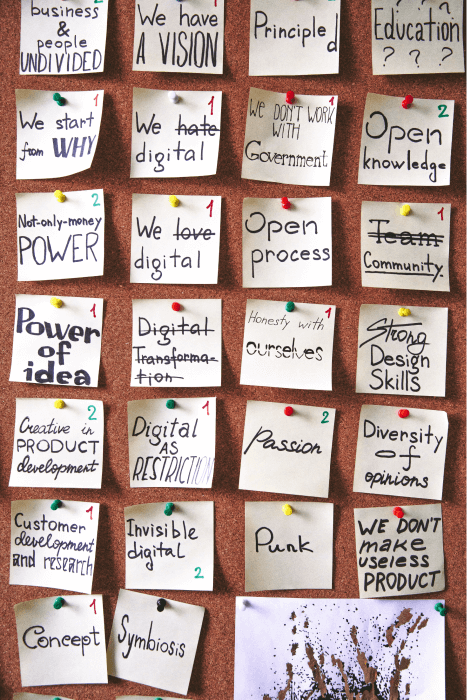Barriers to Learning

Barriers to learning are the things that hinder you from obtaining and retaining knowledge. Effective trainers know how to identify and overcome these obstacles with learners. Let’s look at examples of barriers to learning and concrete ways to overcome them.
What are the barriers to learning?
A variety of things can make learning difficult, from the learning environment to the way we understand and absorb information. It’s different from person to person. Someone may enjoy listening to lectures while another person may find sitting still for hours physically tricky.

But whatever factor it may be, the easiest way to understand these barriers is to categorize them as either internal or external. Find the source of the problem first. Identify the factors that influence learning, and then create solutions.
Internal barriers
Internal barriers are related to your beliefs, values, attitude, behaviors, or even quirks. They can be learning habits you picked up growing up. They can be emotional, motivational, or personal as well.
- Emotional barriers are your feelings toward lessons, whether it’s a fear of failure or a lack of confidence. Strong resistance to learning something new may also be an emotional barrier.
- Motivational barriers include a lack of goals or purpose. You may be less inclined to absorb the information when a lesson doesn’t seem to fit your interest or career path.
- Personal barriers can be your learning style preferences or any physical/mental impairments you may have that affect your learning. People with disabilities, for example, need specialized tools to even just gain new information.

External barriers
External barriers come from your learning environment. These are the things that do not come from you, like tight schedules, colleagues, availability of materials, and so on. These things may or may not be under your control, but otherwise affect your learning.

5 common examples of barriers to learning
We’ve talked about the categories of learning barriers. Now let’s dive deeper into more specific examples that you and your learners have definitely experienced. We’ve also listed some suggestions on how to overcome these barriers.
When learners are not enthusiastic about a lesson, they won’t even bother taking it. This can be caused by disinterest in the topic. Sometimes, learners may fail to see how the training may be relevant to them and their careers.

If this is the case, the best option is not to change the learner or the topic, but to incentivize the learning process. Make learning fun. Learning management systems (LMS) use a technique called gamification. It makes learning feel more like a game – not work. Let your teams tap, swipe, and drag their way through essential lessons. If you have competitive learners, gamification includes a leaderboard where they can healthily compete with each other.
There are times when training is difficult because objectives aren’t clear. Training becomes ineffective when the goals are too unrealistic or not aligned with the learners. They’re unable to move forward with training because of the pressure of the set goals.

Before creating a training plan, consult your learners. Work with them to optimize a plan that will work for everyone in the long run. Once the learning paths have been built, at the get-go be clear and upfront with your objectives and outcomes. This way, learning will feel more collaborative than imposing.
New students can be intimidated by courses that require prerequisite knowledge. There’s a tendency for training to drop a load of new information without first setting a baseline for knowledge. It would be difficult for learners to engage with the information if they can’t connect with things they already know.

The best way to overcome this barrier to learning is to design courses with a pathway in mind. Microlearning is a great method to create digestible lessons in a sensible sequence for learners. This way, knowledge is acquired and retained much more efficiently than in more traditional modes of learning.
Let’s face it, 9 times out of 10 the learning materials that most trainers use are simply not engaging enough. Learners respond to different kinds of media. And in this digital age, learners need more dynamic materials to acquire and retain new information.

Fortunately, this is easily solved nowadays with the right technology. EdApp is a tool you can use to create engaging learning content for free. Choose from 80+ templates and enhance your learning with videos, images, quizzes, games, assessments, and more. All of this without an inch of coding.
Now this is obvious – most of the barriers to learning boil down to a lack of engagement. Popular media often represents learning as a tedious and boring process, but it doesn’t have to be. Learning can come in many forms, not just a sit-down lecture. Learning technology has come a long way, so use this to your advantage.

For example, mobile learning has designed ways to make learning dynamic. Put training in your team’s pockets. Your learners can access bite-sized courses from their smartphone – or any device – whenever they have 5 minutes to spare. With no internet required. Give your learners engaging content wherever they are.
Bring engaging learning materials to your learners for free with EdApp today.
Author
Alec Bailon
Alec is an eLearning content writer for EdApp, a pioneer LMS that designs mobile, creative, and effective solutions for workplace training and beyond. On the off days, they enjoy cooking, reading, or finding a live show or play to watch.
